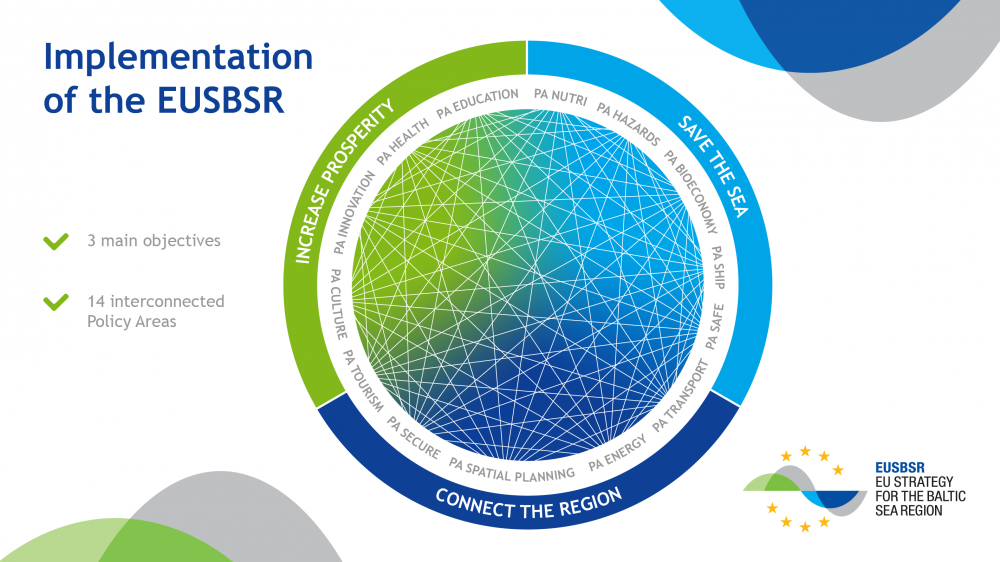The EUSBSR is platform for cooperation and coordination with open and transparent participation, inclusiveness and multi-level governance. The Strategy focuses on challenges and opportunities, which are more efficiently addressed when working in a coordinated manner across countries within the region.
The EUSBSR has three objectives: Save the Sea, Connect the Region and Increase Prosperity. Each of them covers a wide range of policies and has impact on the other objectives – they are interlinked and interdependent. The objectives are complemented by sub-objectives.
Three objectives
- Save the sea
- Connect the region
- Increase prosperity
Sub-objectives
- Clear water in the sea
- Rich and healthy wildlife
- Clean and safe shipping
- Reliable energy markets
- Good transport conditions
- Connecting people in the region
- Better cooperation in fighting cross-border crime
- Improved global competitiveness of the Baltic Sea Region
- Climate change adaptation, risk prevention and management
Policy Areas
The work within the EUSBSR is thematically divided into policy areas (PAs), each of which develops between two and four actions.
The 14 policy areas are: PA Nutri, PA Hazards, PA Bioeconomy, PA Ship, PA Safe, PA Transport, PA Energy, PA Spatial Planning, PA Secure, PA Tourism, PA Culture, PA Innovation, PA Health and PA Education.
The wide thematic coverage of the policy areas provides opportunities for different kinds of stakeholders to participate and propose various kinds of activities. While the strategy promotes the building-up of longer-term networks and platforms, new stakeholders as well as novel ideas and initiatives are welcome.
All policy areas must take into account EU climate and environmental policy objectives. Cooperation with neighbouring non-EU countries is promoted across the activities within all policy areas.
Actions & activities
Each policy area (PA) develops actions which contribute to achieving the EUSBSR objectives. Actions are implemented through activities. An action can, for example, be the development of a policy recommendation, a new approach, an increased coordination in policy making, support to a process already engaged or a networking initiative.
The PAs ensure that horizontal aspects, notably addressing climate change and cooperation with non-EU neighbouring countries and organisations, are appropriately integrated into the actions.
Activities under an action can be – but are not limited to - projects (single or grouped in clusters), processes, networks or platforms.
Find more information in the Action Plan attached.




